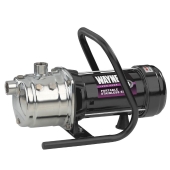I have similar thoughts. When I plant from seed, most things get eaten by one thing or another. This year I tried some half tubes made by cutting hardware cloth (why do they call it that?) with a wire cutter, to form tunnels a few inches high. This saved my lettuce seedlings. I also went back to Steve Solomon's methods on a large bed of corn and beans and squash -- cultivate weekly to kill all weeds and make a dust mulch. After a bit the garden plants get big and dominate the planting. But my sense is that the soil isn't as happy, I think it requires a soil very rich in organic matter to start with, and would like more organic matter added as the season goes by.
When I do chop and drop, I tend to get distracted and then the weeds outgrow the garden plants and either that's that, or I come back eventually and repeat, but by then the garden plants have been set back by a few weeks.
I also notice that there are two crops of weed seeds: the cool weather and the warm weather. So you can clear a bed of weeds and then there will be a new batch starts up around the solstice.
And I have a theory that here in NE CT, where we have wet springs and then often a dry spell come July/August, it might be good to cultivate and dust mulch until the solstice, and then put on a lot of mulch after that.
I have one patch of good soil that I cleared in the spring, added some compost, and scattered a wild flower seed mix. There turned out to be weed seeds in the compost and they took off with great gusto, leaving me with one or two stray wildflowers poking out. Had the tallest lambs-quarters plant ever though.
I vote you follow your plan, and continue cultivating for a bit after you transplant in your seedlings, then mulch well once they're solidly established. But no harm leaving some weeds if you can stay on top of the chop and drop routine.








